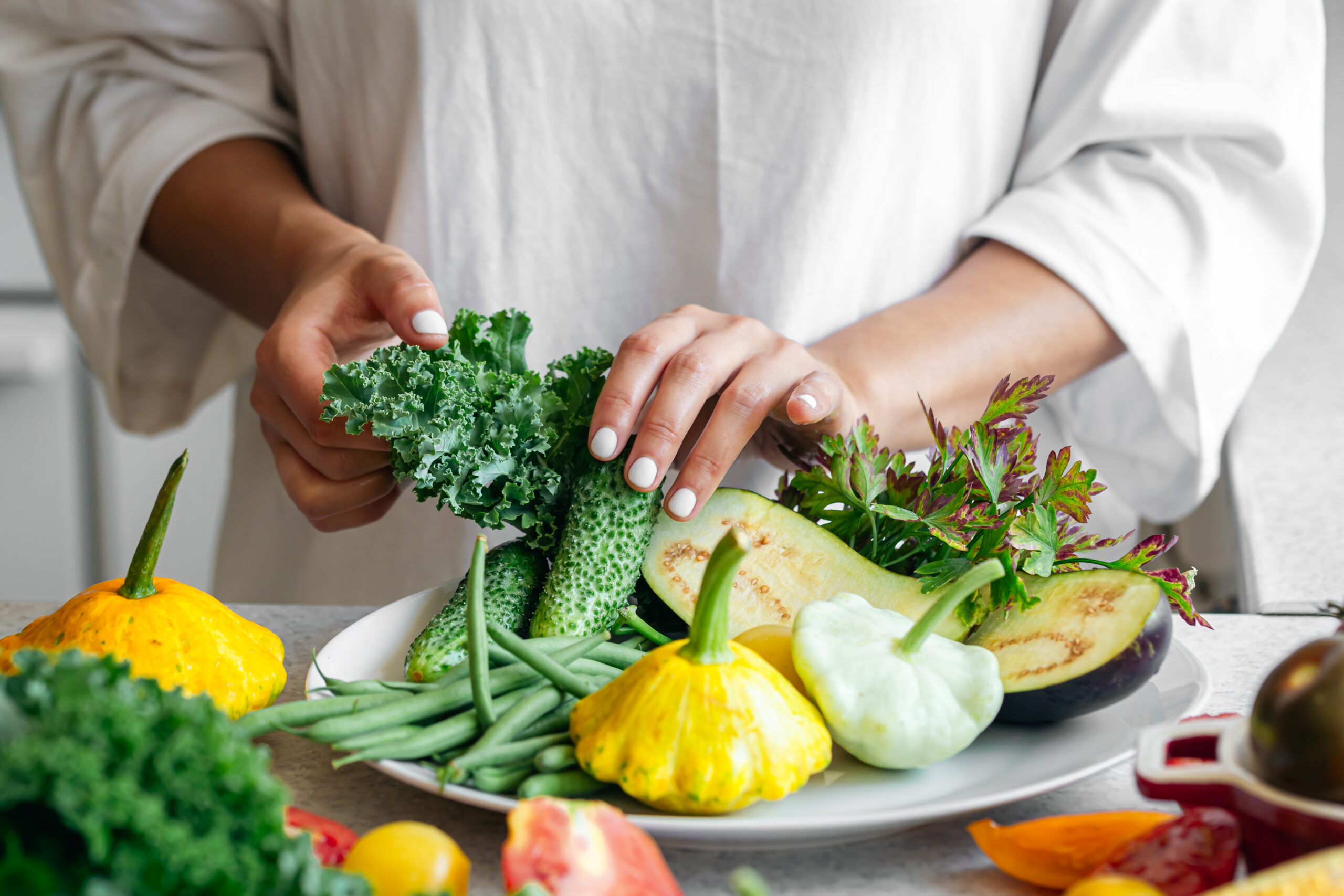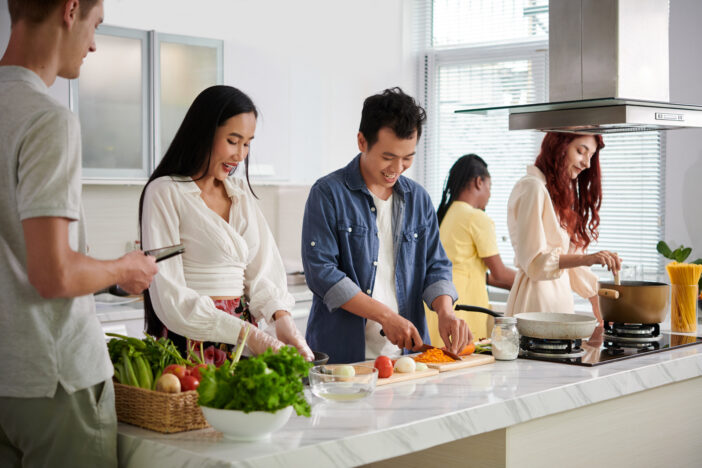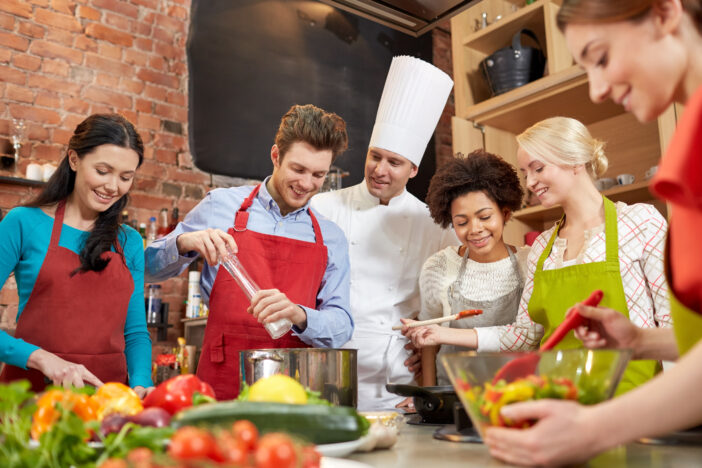5 Ways Culinary Therapy Boosts Mental Health
Cooking for mental wellness: Culinary therapy reduces stress, boosts mood, and enhances self-esteem through mindful, creative food preparation.

Culinary therapy is transforming kitchens into sanctuaries for mental well-being. By engaging in mindful cooking, you can alleviate stress and foster creativity.
Disclosure: As an Amazon Associate, this site earns from qualifying purchases. Thank you!
Understanding Culinary Therapy

What is Culinary Therapy?
Culinary therapy is using cooking as a therapeutic modality. It helps manage stress, anxiety, and other mental health issues. By engaging in the creative process of preparing food, you can achieve mindfulness and emotional well-being.
Historical Background and Development
Culinary therapy has roots in ancient traditions where cooking was seen as a meditative practice. Over the years, it developed into a formal therapeutic technique. Mental health professionals started incorporating culinary activities into treatment plans, recognizing the positive impact on patients’ mental health.
Benefits of Culinary Therapy
Culinary therapy offers numerous advantages for mental, physical, and social well-being.
Mental Health Advantages
- Reduces Stress and Anxiety: Studies show cooking can lower cortisol levels, helping you relax.
- Enhances Mood: Engaging in creative cooking releases dopamine, boosting happiness.
- Boosts Self-Esteem: Successfully preparing a dish can increase your sense of accomplishment.
- Encourages Mindfulness: Focused cooking promotes being present in the moment, which enhances overall mental clarity.
Physical Health Improvements
- Promotes Healthy Eating: Preparing your meals encourages healthier food choices.
- Improves Motor Skills: Chopping and stirring can enhance fine motor abilities, especially in older adults.
- Provides Physical Activity: Cooking involves standing, moving, and lifting, which can contribute to daily exercise.
- Supports Digestive Health: Home-cooked meals often include fresher and less processed ingredients, promoting better digestion.
Social Benefits
- Fosters Connection: Cooking with others can strengthen bonds and deepen relationships.
- Enhances Communication: Collaborative cooking requires clear communication and teamwork.
- Builds Community: Joining cooking classes or groups can provide a sense of belonging.
- Reduces Isolation: Culinary activities encourage social interaction, which can alleviate feelings of loneliness.
Major Techniques in Culinary Therapy
Culinary therapy uses a variety of techniques to enhance mental and physical health. Here’s a look at the major methods used.
Mindful Cooking
Engage your senses in the cooking process to stay grounded in the moment. Paying attention to the colors, smells, and textures helps you achieve mindfulness. Dr. Jon Kabat-Zinn emphasizes that being present can significantly reduce stress and anxiety. Countless participants find peace through simple acts like stirring soup or chopping vegetables.
Therapeutic Baking
Experience the satisfaction of creating baked goods from scratch. Measuring ingredients requires focus, promoting cognitive function and fine motor skills. Baking can also trigger positive memories and elevate your mood. Many people report feelings of accomplishment and joy when baking bread or pastries.
Group Cooking Sessions
Strengthen your social connections through collaborative cooking. Preparing and sharing meals with others fosters communication and camaraderie. Group sessions often include activities like planning meals and assigning tasks, which enhance teamwork. This technique can reduce feelings of isolation and build a sense of community.
Implementing Culinary Therapy at Home

Creating the right setting and selecting approachable recipes can turn your kitchen into a therapeutic space.
Simple Recipes to Get Started
Choose recipes that are easy to follow yet engaging. Opt for dishes like:
- Vegetable Stir-Fry: Quick, colorful, and customizable.
- Homemade Pizza: Fun to prepare with endless topping options.
- Soup: Comforting, adaptable, and great for mindfulness.
Creating a Therapeutic Kitchen Environment
Set up a calming atmosphere in your kitchen to enhance the therapeutic effect:
- Declutter: Keep your workspace tidy.
- Soft Lighting: Use warm lights for a relaxing vibe.
- Calm Music: Play soothing tunes to maintain a stress-free environment.
Engaging Family and Friends
Involve loved ones to make culinary therapy a shared experience:
- Collaborative Cooking: Assign tasks to family members.
- Cooking Nights: Schedule regular cooking sessions.
- Recipe Sharing: Exchange recipes and cooking tips.
Implement these steps to make culinary therapy a regular home routine.
Implementing Culinary Therapy Professionally

Culinary Therapy in Rehabilitation Centers
Introduce therapeutic cooking classes to boost recovery. Rehab centers can use culinary therapy to develop life skills and promote mental well-being. Include sessions on diverse cuisines to enhance engagement and support dietary goals.
Schools and Educational Institutions
Integrate culinary therapy into the curriculum for students. Schools can offer cooking classes that teach nutrition, teamwork, and stress management. Create after-school programs where students prepare meals together, fostering social bonds and self-confidence.
Corporate Wellness Programs
Incorporate culinary therapy into employee wellness initiatives. Companies can host workshops where teams cook healthy meals, encouraging collaboration and stress relief. Offer lunch and learn sessions focused on nutrition education and mindful eating practices.
Case Studies and Success Stories

Individuals’ Transformation Through Culinary Therapy
- John’s Journey with PTSD: John, a military veteran dealing with PTSD, found solace in the kitchen. Guided by structured culinary therapy sessions, he learned mindfulness techniques, enhancing his emotional regulation. Weekly cooking classes became his sanctuary, helping him regain a sense of control and purpose.
- Sarah’s Battle with Anxiety: Sarah struggled with severe anxiety and depression. Culinary therapy allowed her to focus on the present, reducing her stress levels. Baking, in particular, became her favorite activity, giving her an outlet for creativity and improving her mood substantially.
- Michael’s Recovery from Addiction: Battling addiction, Michael discovered a new passion through culinary therapy at a rehabilitation center. Cooking helped him develop healthier routines and provided a positive distraction, aiding his recovery process and giving him a new zest for life.
- Rehabilitation Centers: Several rehab centers have integrated culinary therapy to support patients’ recovery. For instance, a center in New York reported a 30% improvement in patient outcomes after introducing cooking classes, citing increased engagement and mental health benefits.
- School Programs: Schools introducing culinary therapy saw remarkable results. A middle school in California implemented a cooking program to teach nutrition and stress management, noting a significant drop in behavioral issues and better academic performance among participants.
- Corporate Wellness Programs: Companies adopting culinary therapy for team-building and wellness saw enhanced employee satisfaction. A tech firm in Silicon Valley reported lower stress levels and improved camaraderie among staff after monthly group cooking sessions were initiated.
How to Become a Culinary Therapist
Required Education and Certification
- Get a degree. Earn a bachelor’s degree in psychology, nutrition, or culinary arts. Psychology provides insight into mental health, while nutrition sharpens food knowledge.
- Pursue certification. Gain a culinary therapy certification. Programs like the Culinary Arts Therapy Certification give you the skills to integrate culinary practices with therapy.
- Acquire licensing. Depending on your state, you might need a counseling license. Check local regulations for specifics and pursue necessary supervised clinical hours.
Skills Necessary for Effective Practice
- Hone communication. Strong interpersonal skills help in understanding clients’ needs and building trust.
- Develop cooking proficiency. Expertise in cooking techniques is essential. Familiarity with a range of cuisines adds versatility.
- Master empathy. Empathy lets you connect deeply with clients, understanding their challenges and providing tailored support.
- Foster creativity. Creativity in both cooking and therapy methods helps in keeping clients engaged and motivated.
Frequently Asked Questions
What is culinary therapy?
Culinary therapy is a therapeutic approach that uses cooking and food-related activities to improve mental well-being. It focuses on mindful culinary practices to reduce stress and elevate mood.
How does culinary therapy help with mental health?
Culinary therapy helps by engaging individuals in mindful cooking activities, which can reduce stress, elevate mood, and provide a sense of accomplishment, thereby improving overall mental well-being.
What conditions can culinary therapy help with?
Culinary therapy can assist individuals dealing with PTSD, anxiety, depression, and addiction. It provides a structured, creative outlet that can promote emotional healing and relaxation.
Where is culinary therapy commonly practiced?
Culinary therapy is often integrated into rehabilitation centers, schools, and corporate wellness programs to support mental health and personal development.
How can someone become a culinary therapist?
To become a culinary therapist, one typically needs education in therapy or psychology, certification in culinary arts, and possibly state licensing. Essential skills include effective communication, cooking proficiency, empathy, and creativity.
Is certification necessary to practice culinary therapy?
Yes, certification in culinary arts or a related field is usually necessary, along with relevant therapeutic training to ensure safe and effective practice.
Why are empathy and creativity important for a culinary therapist?
Empathy allows a therapist to understand and support their client’s emotional needs, while creativity helps in designing engaging, therapeutic cooking activities. Both skills are crucial for effective therapy.
Can culinary therapy be used in a corporate setting?
Yes, culinary therapy can be used in corporate wellness programs to reduce stress, enhance team building, and promote overall employee well-being.





